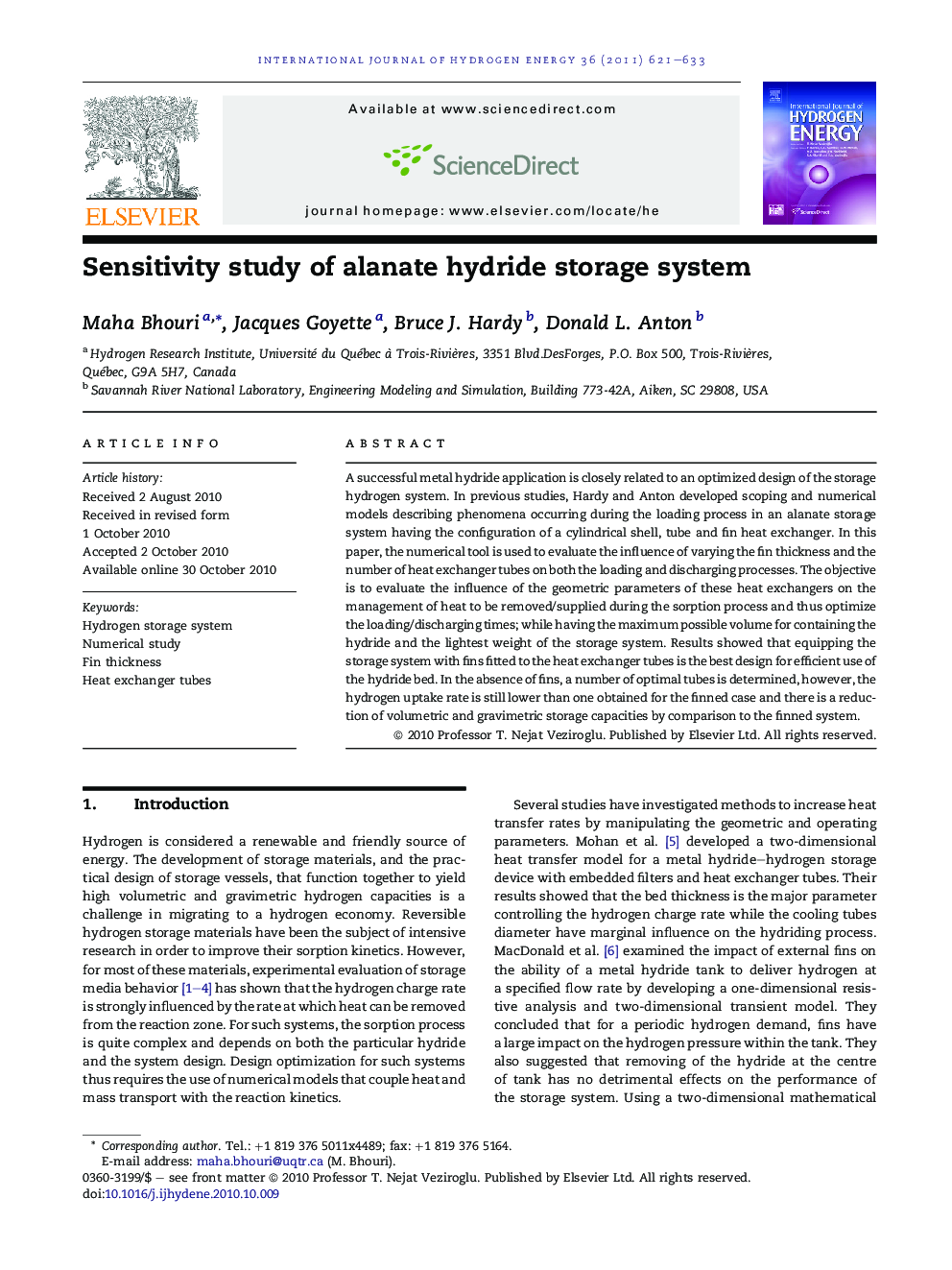| Article ID | Journal | Published Year | Pages | File Type |
|---|---|---|---|---|
| 1277815 | International Journal of Hydrogen Energy | 2011 | 13 Pages |
A successful metal hydride application is closely related to an optimized design of the storage hydrogen system. In previous studies, Hardy and Anton developed scoping and numerical models describing phenomena occurring during the loading process in an alanate storage system having the configuration of a cylindrical shell, tube and fin heat exchanger. In this paper, the numerical tool is used to evaluate the influence of varying the fin thickness and the number of heat exchanger tubes on both the loading and discharging processes. The objective is to evaluate the influence of the geometric parameters of these heat exchangers on the management of heat to be removed/supplied during the sorption process and thus optimize the loading/discharging times; while having the maximum possible volume for containing the hydride and the lightest weight of the storage system. Results showed that equipping the storage system with fins fitted to the heat exchanger tubes is the best design for efficient use of the hydride bed. In the absence of fins, a number of optimal tubes is determined, however, the hydrogen uptake rate is still lower than one obtained for the finned case and there is a reduction of volumetric and gravimetric storage capacities by comparison to the finned system.
